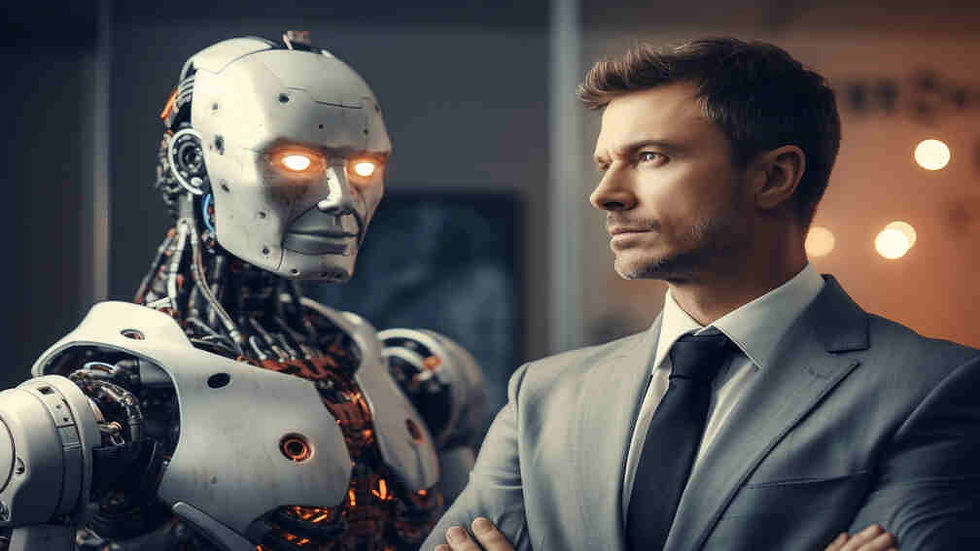How is AI-Generated Image different from Deepfake?
- Sachin
- May 4, 2024
- 3 min read
AI-generated images and deepfakes share some similarities, but they also have distinct differences.

AI-generated images and deepfakes share some similarities, but they also have distinct differences. Let's break it down:
1. Definition
AI-Generated Images:
These are images created by artificial intelligence algorithms, often using techniques like Generative Adversarial Networks (GANs). GANs learn from existing data to generate new, realistic images that don't necessarily correspond to any specific real person or scene.
Deepfakes:
Deepfakes are highly convincing fake videos and images created by AI neural networks. They specifically involve manipulating existing content (usually videos) to replace a person's face with someone else's, making it appear as if the target person is saying or doing something they didn't actually do.
2. Purpose
AI-Generated Images:
These can be used for various purposes, such as creating realistic avatars, generating art, or enhancing image quality.
Deepfakes:
Deepfakes are often used for deceptive purposes, spreading misinformation, or creating fake content that appears genuine.
3. Creation Process
AI-Generated Images:
Created from scratch by AI algorithms without any specific reference to existing individuals or scenes.
Deepfakes:
Start with existing videos or images of real people. The AI then replaces their face with another person's face, blending it seamlessly into the original content.
4. Quality and Realism
AI-Generated Images:
Can be highly realistic, but they don't necessarily resemble any specific person. Quality varies based on the training data and the specific AI model.
Deepfakes:
Aim for extreme realism, often fooling viewers into believing they are genuine. High-quality deepfakes can be difficult to distinguish from real videos.
5. Detection Challenges
AI-Generated Images:
Easier to detect because they lack specific references to real individuals or scenes.
Deepfakes:
More challenging to detect due to their seamless integration into existing content. Researchers and tools are constantly improving detection methods.
6. Motivation
AI-Generated Images:
Created for artistic or practical purposes.
Deepfakes:
Often created with malicious intent, such as spreading false information or damaging someone's reputation.
Conclusion
1. AI-Generated Images:
These are created using artificial intelligence algorithms, often based on Generative Adversarial Networks (GANs).
GANs consist of two neural networks: a generator and a discriminator. The generator creates new images, while the discriminator evaluates their authenticity.
AI-generated images can be used for various purposes, such as creating realistic faces, landscapes, or objects.
They are not necessarily deceptive or harmful; they can be used for creative purposes, art, or enhancing existing content.
2. Deepfake Images:
Deepfakes are highly convincing fake videos and images created by AI neural networks.
They combine deep learning techniques with image manipulation to create realistic but entirely fabricated content.
Deepfakes have been used to deceive people, manipulate public opinion, and spread misinformation.
Detecting deepfakes requires careful analysis and technological advancements.
AI algorithms analyze features like facial landmarks, lighting conditions, and inconsistencies in pixelation to differentiate between authentic and manipulated content.
In summary, while AI-generated images can be harmless and creative, deepfakes pose risks due to their deceptive nature. Detecting deepfakes is an ongoing challenge, but advancements in AI can help us stay vigilant against misinformation and manipulation.
While both AI-generated images and deepfakes involve artificial intelligence, their primary differences lie in their creation process, purpose, and the level of realism they achieve. Deepfakes, in particular, raise concerns due to their potential for deception and misuse.
If you're curious about spotting deepfakes, you can even test your skills using tools like Detect Fakes.
Also read:






Comments